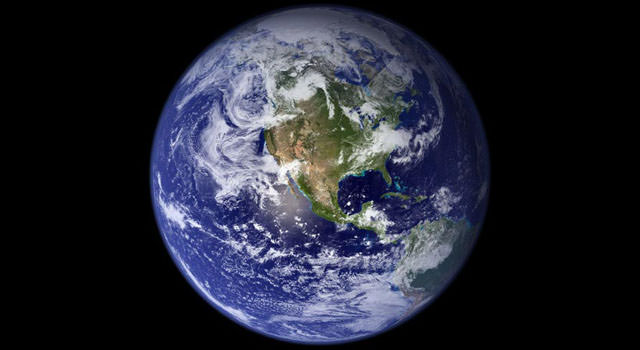[/caption]
When it comes to planet Earth, it’s very important to know if we’re growing or shrinking. While plate tectonics are responsible for major changes in our planet’s outer crust, we need to have accurate measurements of our atmosphere and magnetic fields, too. To make these appraisals accurate, the global science community established the International Terrestrial Reference Frame.
At one time scientists theorized that Earth might be expanding or contracting. After all, major events like volcanoes, landslides and ice sheets were at the root of significant elevation changes. Even sizable climate events like El Nino and La Nina are responsible for redistributing large amounts of water. Now a new NASA study, published recently in Geophysical Research Letter, has pointed towards the utilization of space measurement tools and a new data calculation techniques which show no vital changes in the size of our planet.
Why is monitoring our size so important? The International Terrestrial Reference Frame is not only important for ground navigation, but satellite tracking as well. NASA says to think of it this way: “If all of Earth’s GPS stations were located in Norway, their data would indicate that Earth is growing, because high-latitude countries like Norway are still rising in elevation in response to the removal of the weight of Ice Age ice sheets.” So for all intents and purposes, the ITRF uses the average center of mass of the total Earth, a computation of a quarter of a century of satellite data. High-precision space geodesy includes:
- Satellite Laser Ranging — a global observation station network that measures, with millimeter-level precision, the time it takes for ultrashort pulses of light to travel from the ground stations to satellites specially equipped with retroreflectors and back again.
- Very-Long Baseline Interferometry — a radio astronomy technology that combines observations of an object made simultaneously by many telescopes to simulate a telescope as big as the maximum distance between the telescopes.
- Global Positioning System — the U.S.-built space-based global navigation system that provides users around the world with precise location and time information.
- Doppler Orbitography and Radiopositioning Integrated by Satellite — a French satellite system used to determine satellite orbits and positioning. Beacons on the ground emit radio signals that are received by satellites. The movement of the satellites causes a frequency shift of the signal that can be observed to determine ground positions and other information.
A team of scientists led by Xiaoping Wu of NASA’s Jet Propulsion Laboratory, Pasadena, Calif., and including participants from the Institut Geographique National, Champs-sur-Marne in France, and Delft University of Technology in The Netherlands are currently busy assessing the accuracy of the International Terrestrial Reference Frame. Through the use of the new data and calculation techniques combined with measurements of Earth’s gravity from NASA’s Gravity Recovery and Climate Experiment (GRACE) spacecraft and models of ocean bottom pressure, they are even able to account for minute changes in Earth’s gravity. The resultant changes have shown Earth’s radius to vary about 0.004 inches (0.1 millimeters) – or less than the thickness of a human hair.
“Our study provides an independent confirmation that the solid Earth is not getting larger at present, within current measurement uncertainties,” said Wu.
Original Story Source: JPL News.

